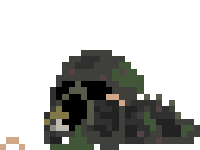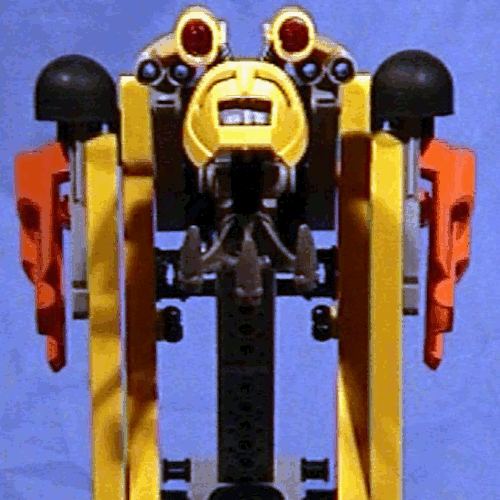
|
2020.01.31 the full story of the sand tarakavaAdapted from a tumblr post. This is something that you see a lot of myths flying around about, so I wanted to write up something that could be pointed to as easy reference for the facts. To start, here are some things that are NOT true, but frequently repeated: - There were five of these models given to private collectors directly by Lego The second point is easy to address: its just a prototype of the final Tarakava set that we did get. Color adjustments like this were never uncommon for the Bionicle design process. I don’t know where the five-model rumor originated, but we’ll debunk that as we get into the real story. |
|
Flashback to the Fall and Winter of 2000. Bionicle is still months from launching (many months for everyone in North America), but work has begun on the tie-in media that will supplement the toyline. Of specific interest to us are the doomed PC game The Legend of Mata Nui (LOMN), and the web game we now know as the Mata Nui Online Game (MNOG). These games needed to integrate the Rahi as enemies, but as summer 2001 releases, the Rahi designs were still being finalized. So what do the developers of these two games (Saffire and Templar, respectively) receive from Lego? Prototypes! The particular Tarakava we see in the picture above was sent to Saffire for LOMN. And, indeed, take a peek at the Tarakava model in the game:  Image captured by PeabodySam …and compare it, particularly the muzzle, to our prototype Tarakava: 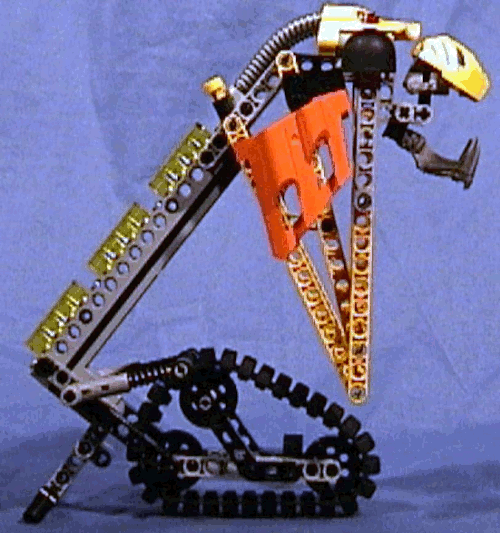 That’s a match, baby!! And it’s significantly different from the final Tarakava design, which doesn’t even use a Ruru mask. Note also the use of the longer 45-degree beams to attach the jaw on the final model, as opposed to the smaller 90-degree parts on the prototype:  I didn’t make this observation myself - the shared Ruru was noted by JrMasterModelBuilder, then The Shadow Emperor realized that the LOMN model and the prototype were totally identical. So thanks to them both!! So Saffire modelled their Tarakava on this prototype, then color-shifted it when they had access to more finalized designs. The same thing happened with Templar in MNOG: 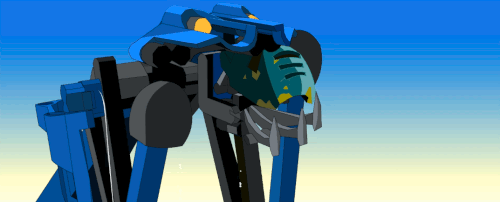 This doesn’t mean, though, that Templar had their own copy of this Tarakava!! Saffire shared their 3D models with Templar, and many of MNOG’s early graphics are based directly on those models. Such appears to be the case here. The plans for MNOG’s final minigame, where you fight all the Rahi at the Kini-Nui, were much more ambitious than the team ultimately had time to implement. While the completed version only incorporates the four relevant retail Rahi sets, there were several more beasts that had their stats figured out in anticipation of being included. We can see this in Templar’s retrospective blog entry on the chapter: 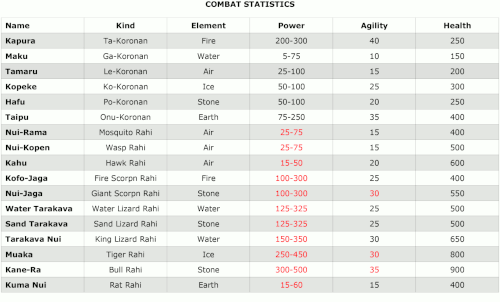 See that, fifth up from the bottom? Sand Tarakava. Someone at Templar must’ve been fond of the colors of the prototype model, and wanted to include it in the minigame! While time didn’t allow, the dialogue addressing this full bestiary was already written, and was included in the game. So we get this from Kopeke:  This, from November 2001, was actually the first time any fans would have heard of a ‘Sand Tarakava’ - nobody outside the teams working on Bionicle even knew about the prototype itself yet. Meanwhile, at Saffire, our prototype friend had outlived its usefulness for game production. What happened next is here recounted by Darvell Hunt, who by some small miracle is the one developer on LOMN that has been receptive to communicating with the fan community. We once had a group activity at the local bowling alley and the reward to the first person who got a strike was a prototype LEGO toy. I forget which one it was, but it was a yellow creature which punched, like a boxer, when you pressed on left and right levers at the back, and had triangular tracks for feet. I won the prototype toy that day and got to take it home. About a year later, Hunt made the decision to part with his prize: I had it for a couple years [sic], but unfortunately, I sold it on eBay a few years later […] Thanks to The Shadow Emperor for grabbing these quotes Hunt later clarified that he actually believed he sold the Tarakava in 2002. So where did it go? Well, we can’t say with total certainty. But what we do know is that, also in 2002, Mark of Mask of Destiny acquired just such a model, debuting it to the public for the first time. The Sand Tarakava in my possession is a prototype model, not a MOC. I did not build it. It will not be produced as a set, except in that the retail Tarakava were derived from it. It sure sounds to me a lot like Mark lucked out and came upon Hunt’s eBay auction! I guess either Mark or some other fans, upon seeing Mark’s pictures of the model (still the only images extant of the actual prototype!) put two and two together in a way that just so happened to be correct - this was the very fellow Templar had designated the Sand Tarakava. The official Bionicle lexicon went up in 2002, and it appears the creators trawled MNOG for terms (see for example, the inclusion of ‘ensign’, ‘drifts’, and several very specific treespeak words). They picked up on Templar’s Sand Tarakava mention and included it with this definition, hewing close to what could be derived from the creature’s name. A desert-dwelling breed of Tarakava. From here, the Sand Tarakava came onto the radar of Greg Farshtey and Jeff James, who embellished this further for the Rahi Beasts book in 2005. They seem to have been aware of fan talk about the prototype as well, as they mention the creature is smaller than regular Tarakava - reflecting the prototype’s more hunched stature compared to the final models.  And that is the entire saga of this yellow lizard. A fairly bog-standard prototype that, through a very specific and weird set of circumstances, became an official creature in the Bionicle mythos, and the object of many collectors’ desires. Its funny how this stuff happens. 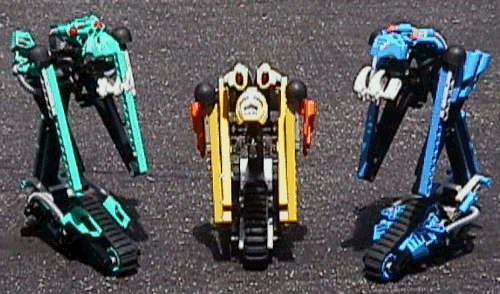 Addendum2023.03.25 Eyes more observant than mine have noted that the Tarakava bio in the PC game glossary makes this suggestive statement: They lie in wait deep under water or buried in the sand. The QFTM story cards have a slightly more elaborate version, seemingly taken from the same source document (likely a story bible): These boxing lizards prepare for battle by taking to a sandy pit, deep pool, or ocean shallows, submerging themselves until only their eyes appear above the surface. We can surmise from this that Tarakava were envisioned as sand-dwelling from the start, complicating the above narrative somewhat; Templar did not invent the Sand Tarakava whole cloth. That said, the fact they intended to show the creature visually in MNOG would imply they had some sort of visual appearance for the creature in mind. Given the evidence at hand I still think it likely they were thinking of this prototype. |
|
